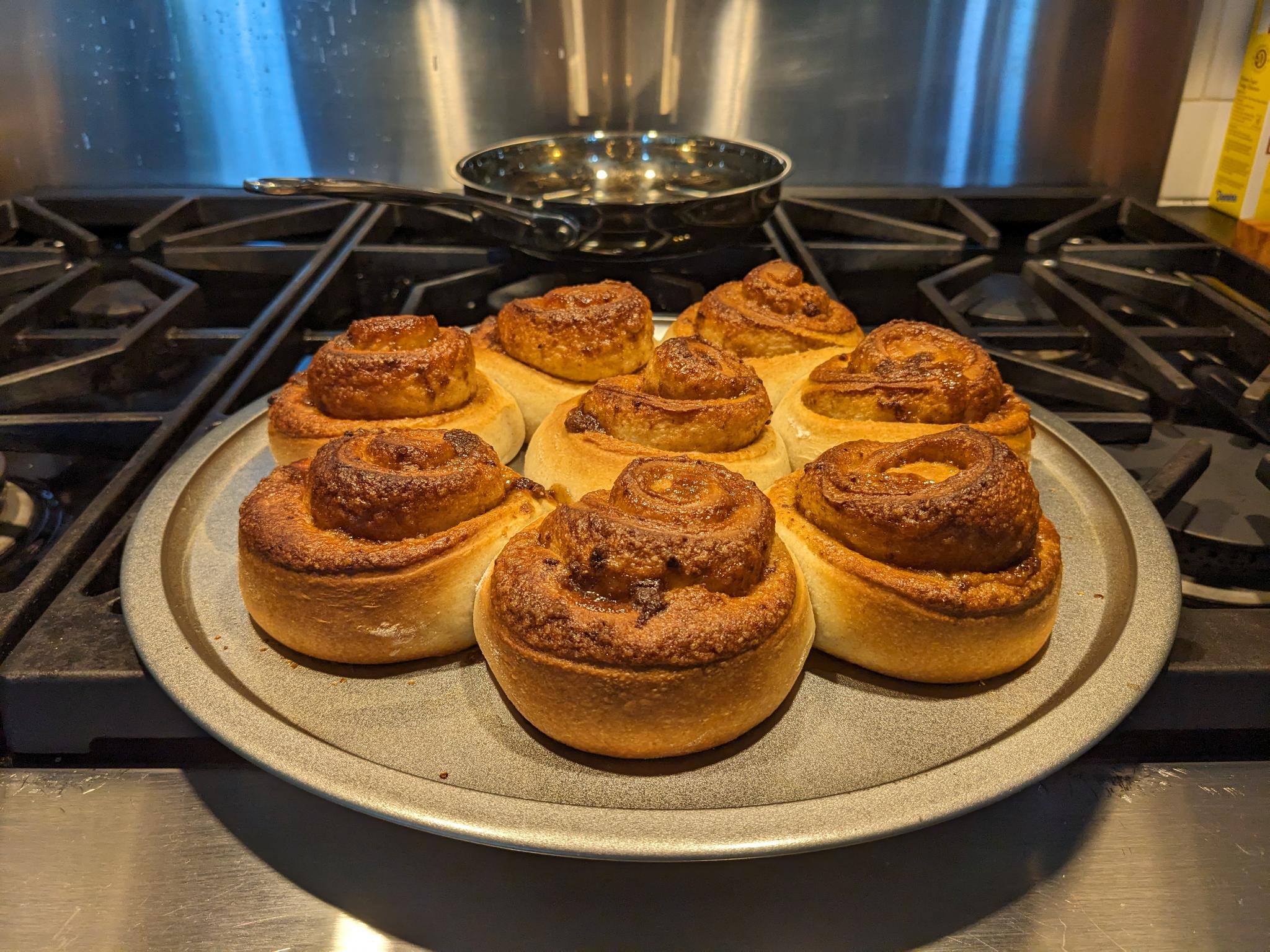I didn't really think so, to be honest. The cinnamon filling overwhelms the other flavors, and the ratio didn't seem high enough to affect the mixing, kneading, or rising noticeably.
rmull
Connecting thermal pads to a plane will make them harder to (hand) solder, but it should be manageable with hot air. Be sure to be patient and give the heat time to sink into the extra thermal mass. You should probably pre-warm the underside to give yourself a head start. You can move the hot air around a little bit as you wait for things to heat up to avoid locally overheating anything. Carefully observe the components with the thermal pads to ensure they fully "settle" as they reflow, since you want to make sure the solder on the thermal pad is fully melted.
Some design rules also reduce the aperture of the window in the paste mask over the thermal pad so that the amount of paste on the underside pads is somewhat reduced - just be careful you don't have a big ol glob of solder paste there otherwise it could squeeze out and make shorts with your other pins.
Consider adding thermal spokes to the vias, pads, and thru-holes connected to the heatsinking GND plane if those pads/holes are not intended to conduct heat, high current, or mechanical support - it will make them easier to solder by reducing the thermal conductivity to the plane. Don't spoke anything in the thermal paths.
Side note, just eyeballing the pictures but the motor traces could be widened to the width of the pads of the driver IC - motors can pull a lot of current in locked rotor conditions. I'm sure you're current limited by the driver and battery and it's probably no big deal but it doesn't hurt to have the insurance. Always good to do a once-over checking for any potential high current paths. You're not especially space-constrained in this design so there is no reason to go with the smallest settings on everything. You can check out some PCB trace width calculators to make sure your worst-case scenarios are covered.
Hi, good job on the canelés. Yours do seem denser than what seems typical, though the outside looks like the right color. It looks like the Seriouseats recipe photos also show a more open structure. I've bought them many times and made them a few times, but with copper molds, and posted about it while back. You can check my pics and recipe for comparison if you want, though the difference in molds may result in different outcomes. https://www.reddit.com/r/Baking/comments/5wjnn5/canel%C3%A9/
Some ideas - Did you weigh your ingredients? Was the confectioner's sugar a poorly controlled variable in terms of corn starch inclusion? Was the oven thoroughly preheated?
I also see that the one in the cross section pic looks to have sunken in quite a bit on the sides compared to the one in the pic showing the exterior. Did that happen as they cooled? Was it cut before or after it cooled? It might be a clue of some sort, but it's hard to say.

Sometimes you can find spec-bending similar-but-different tech implementations within closed device ecosystems that aren't meant to interface with third party equipment. With that said I doubt this cable is an example of that.